Edible indigenous plants offer a great way to eat well and garden sustainably. We share some great tips on indigenous plants that you can easily grow and harvest in your garden for medicinal remedies and exciting culinary experiences – courtesy of Good Hope Garden Nursery. Written by Roushanna Gray & Gael Gray

We have a treasure trove of edible and medicinal plants within our rich plant kingdom in South Africa. It is important to know what part of the plant to use and how it can be used for culinary concoctions; some are edible only in certain seasons or after certain preparations. Below is a selection of some of our favourites!
Planting these indigenous edibles into your garden gives you easy access to fresh flavours that, at the same time, can handle our harsh South African climate as they are water-wise and easier to maintain than your classic herb or veg. This makes it much simpler to connect to your food and the rhythm of nature in a fresh and wild way and enjoy playing with new recipes using these ingredients picked on your doorstep. The local birds, bees and insects will be grateful, too.
1. Pelargonium culallatum (wild malva)
– The leaves of this plant diffused into a tea can be used to treat stomach disorders.
– Bruised leaves can be used as a poultice for sores and wounds, and a rolled-up fresh leaf inserted in the ear (not too deep) can reduce earache.
– Add the leaves to your bath for a fragrant, relaxing soak to relieve tired muscles.
– Tickle your salads and baked goods pink with the flowers of the wild malva.
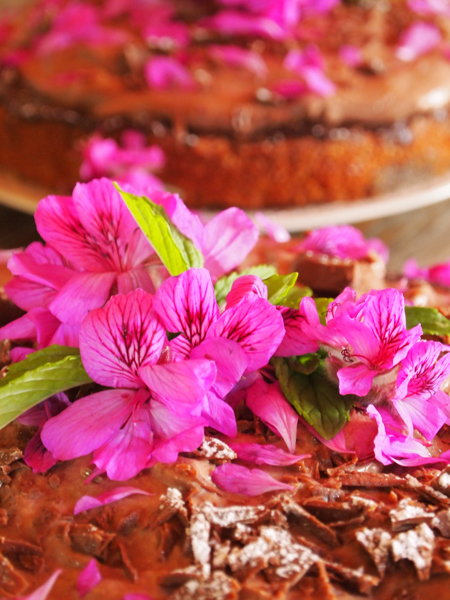
This showy pelargonium grows to a height of one metre and flowers beautifully in post-fire years. It grows best in a sunny position in well-drained soil and looks best if pruned after flowering to prevent it from getting leggy.


2. Pelargonium tomentosum (peppermint-scented pelargonium)
Peppermint pelargonium is high in essential oils.
– Use the flowers in salads and to decorate cakes.
– Simmer leaves in milk, strain and use in baking or as teas.
– Makes a delicious flavouring for ice cream.
– The leaves can be crushed and used to soothe bruises by adding the leaves to your bath or as a poultice.
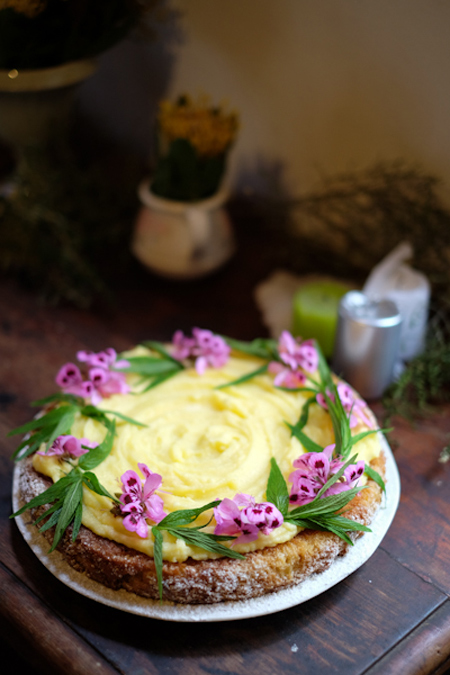
A shady position, compost and a bit of water in summer will keep this fast-growing pelargonium happy. One plant can cover 0.75m².
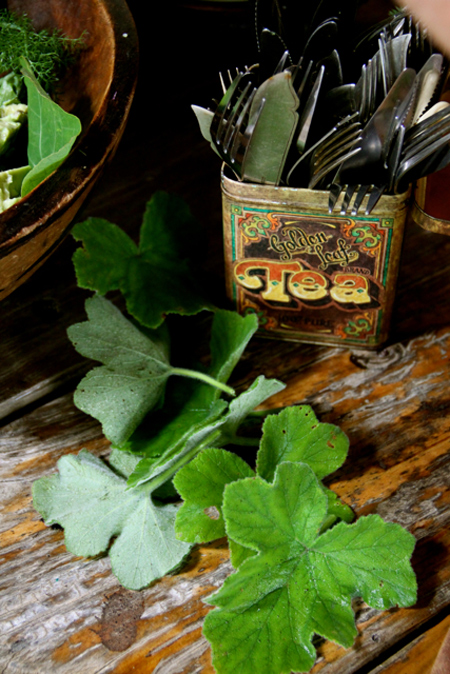
3. Coleonema pulchellum (confetti bush)
– Traditionally used as a deodoriser, add this to potpourri
– This aromatic herb can be used in sweet or savoury dishes – strip the little leaves off the stems as with thyme.

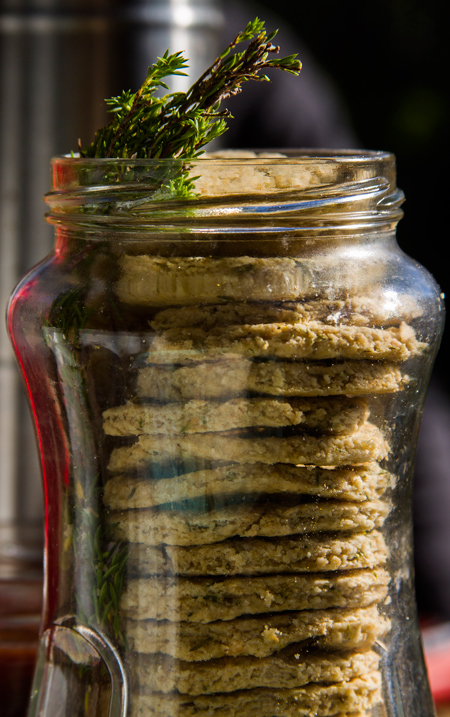
Known as false buchu, this lovely shrub grows to one metre or more in height and width. They like well-drained soil and a bit of compost, and they prefer a sunny position, although they do tolerate light shade. As with all fynbos, a mulch of compost or bark is beneficial as it keeps the shallow root system cool. It responds well to pruning.

4. Oxalis pes-caprae (wild sorrel)
The whole plant is edible, and it has a nice, sharp taste. It is sour due to the oxalic acid content, so don’t overeat.
– The flowers can be used in salads, and the heart-shaped leaves can be used as a garnish in salads and dips.
– The stalks and roots can be eaten raw or cooked in milk. Traditionally oxalis is used as an ingredient in ‘waterblommetjie stew’ and as a salt substitute.
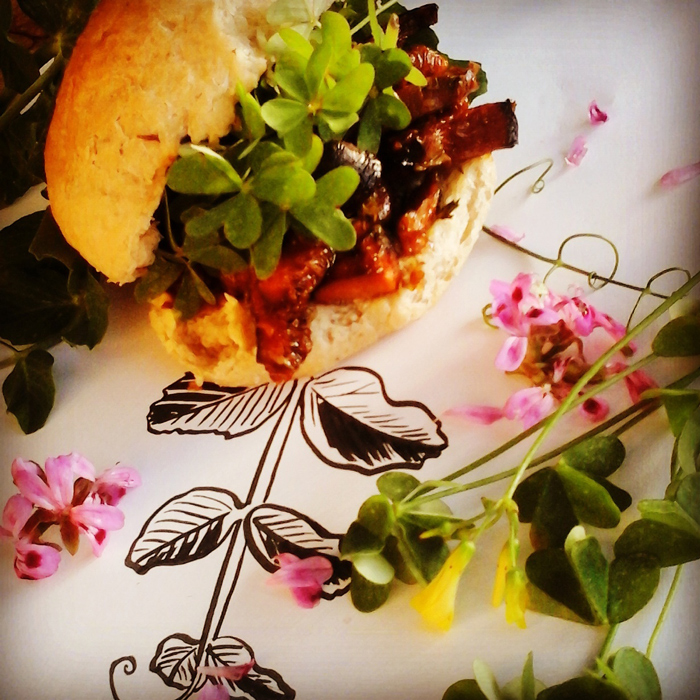
We all take this lovely spring flower for granted. It occurs naturally in the Western Cape and doesn’t have to be planted. It regrows from little underground corms as soon as the rains start. It responds well to a bit of compost and a sunny position, although a bit of shade doesn’t stop them from flowering. They die down at the end of spring.

5. Artemesia afra (African wormwood)
– The wormwood is used medicinally to treat fever, colds, flu, sore throats, coughs, asthma, pneumonia and headaches.
– The bruised leaves can be used as a poultice for sores and wounds, and a rolled-up fresh leaf inserted in the ear (not too deep) can also help earache.
– The leaves have a very strong flavour, so use sparingly, but it makes a great addition to iced tea and herbal drinks.
– Crush for a beautiful flavour addition to cocktails.

This hardy shrub has delicate-looking foliage and can be used effectively in a herbaceous border. It is easy to grow, drought resistant and responds well to being composted. It should be pruned hard after flowering to keep it looking good. Excellent garden plant.
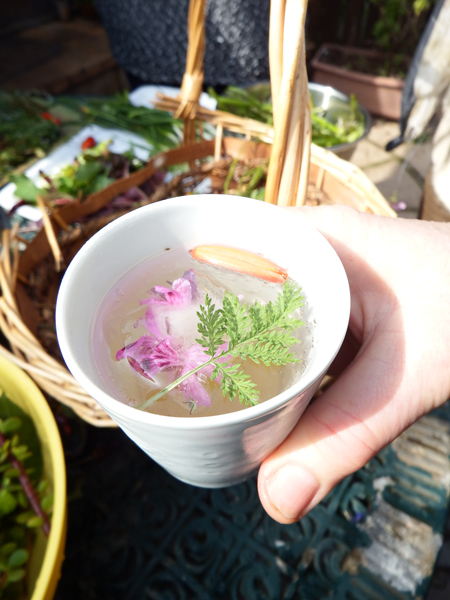
6. Carissa macrocarpa (num-num)
The beautiful berries of the num-num can be eaten as a fruit as they are very high in vitamin C and pectin.
– Excellent for making jam and preserves.
– They impart a gorgeous ruby-red hue to syrups and cordials.
This reasonably slow-growing summer rainfall coastal shrub grows best in nutrient-rich soil. It is often used as a windbreak or a security hedge plant but also stands very well on its own. It is drought-resistant and grows up to two metres. The num-num has lovely white flowers in spring and summer, followed by delicious fruit.


7. Tulbachia violacea (wild garlic)
The whole plant is edible.
– The flowers can be used in salads and as a garnish.
– The leaves can be used like chives or as an insect repellent.
– The roots have a very pungent garlic flavour (so use them sparingly) and can be used like regular garlic. They are particularly great in stews and roasts.
– A tea made from the roots or leaves is good for coughs and colds, and it has similar medicinal properties to regular garlic.

This excellent border plant has bluish-green leaves. It flowers profusely if watered through the summer months with attractive mauve flowers. It is easy to grow and is reported to keep moles away. It occurs naturally along the south coast.

8. Jasminum multipartitum (many-petalled jasmine)
This wonderful perfume-scented, delicate white star flower is used cosmetically and in potpourri.
– Use the flowers in salads, baking, teas or as a flavouring.
– Makes a beautiful garnish but discolours quickly, so it has to be used fresh and fast.
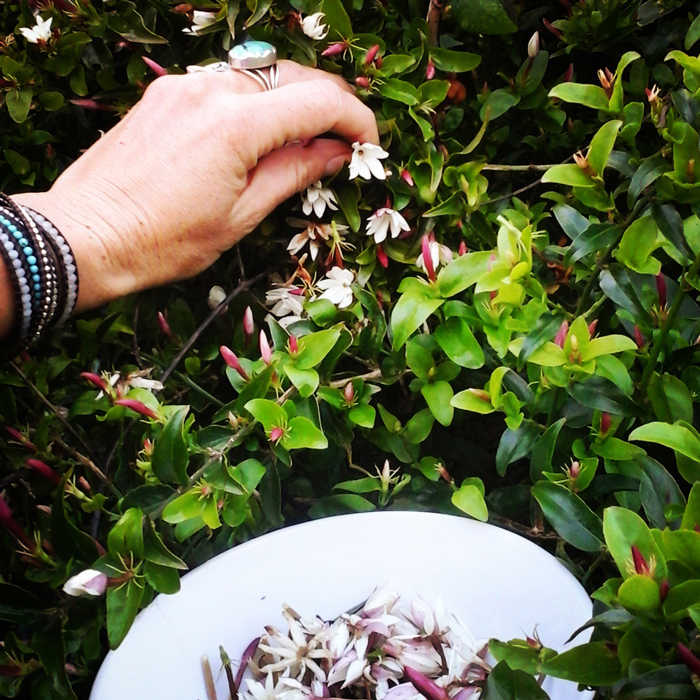
This plant has two forms – a scrambling shrub and a creeper. Both have beautifully scented large white jasmine flowers with a pink reverse from August to November. They are naturally widespread in summer rainfall areas. They will grow in sun or semi-shade and can tolerate wind.
9. Carpobrotus edulis (sour figs)
– The succulent leaves are excellent for skin problems like sunburn, bee and blue bottle stings, rashes, cold sores and insect bites.
– Chew on the leaves for sore throat relief.
– The fruits have a tamarind-tasting juicy seed centre and are used to make jams, chutneys and sauces.
– The pink flowers produce a sweeter-tasting fruit than the yellow flowers.

This fast-growing succulent ground-cover flowers from August to October. The large flowers are yellow but turn pink with age. It is widespread in the south Western Cape, where it is used as a pioneer plant to hold banks and exposed sand.

10. Mentha longifolia (balderjan)
– Use medicinally as a tea for stomach disorders as this plant has calming properties similar to exotic mint.
– Suitable for flavouring in baking, jams, syrups and salads.
– Can be used as regular mint for culinary uses.
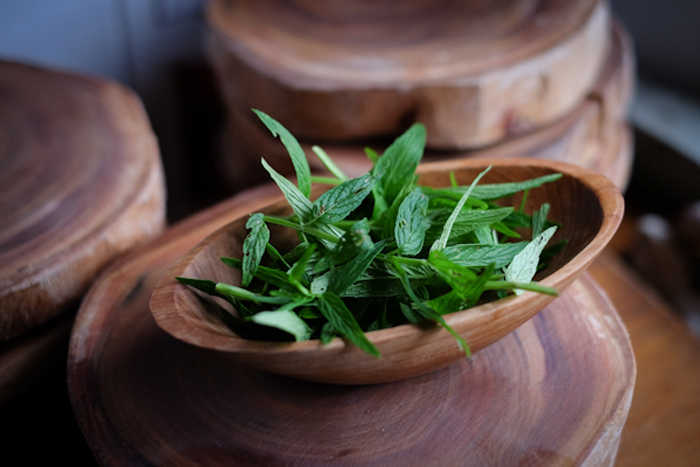
This easy-to-grow herb is found naturally from the Cape to Lesotho. It grows in damp areas in sun and light shade.

11. Salvia africana lutea (aromatic sage)
– This sage can be used medicinally as a tea for coughs, colds and stomach ailments.
– A delicious herb in cooking as it works well with veg and pasta dishes, chicken, sauces, stews and roasts. Add a sprig and fish it out later, as it imparts a delicious flavour but is bitter to eat.
– Dry the leaves and store them in a glass jar in your spice cupboard or add them to a salt mix.
– Use the flowers as a garnish in salads.
It is a hardy coastal shrub and grows in sandy coastal soils. It forms a good windbreak and is an excellent pioneer plant. It is covered in orange blooms with darker bracts in the early spring.
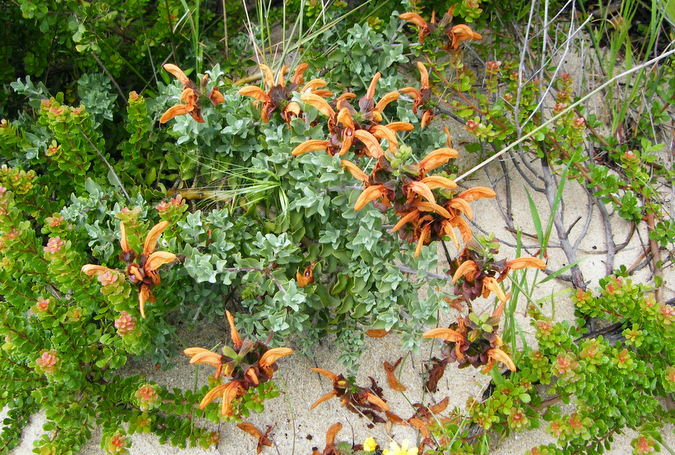
12. Agathosma apiclata (garlic buchu)
It possesses a strong garlic scent and is high in essential oils.
– Adds a garlic flavour to cooking and baking.
– Good for flavouring vinegar and oils.

This metre-high, hardy shrub grows in coastal dunes and limestone soils of the Southern Cape, giving the ‘holiday’ smell to the Knysna area. It prefers a sunny position and is covered in white flowers in late winter.

PLEASE NOTE: Good Hope Gardens Nursery and Veld and Sea cannot take any responsibility for any adverse effects of using plants. Always seek advice from a professional before using a plant medicinally.
To comment on this story: Login (or sign up) to our app here - it's a troll-free safe place 🙂.![]()
HOW TO GET THE MOST OUT OF AFRICA GEOGRAPHIC:
- Travel with us. Travel in Africa is about knowing when and where to go, and with whom. A few weeks too early / late and a few kilometres off course and you could miss the greatest show on Earth. And wouldn’t that be a pity? Browse our ready-made packages or answer a few questions to start planning your dream safari.
- Subscribe to our FREE newsletter / download our FREE app to enjoy the following benefits.
- Plan your safaris in remote parks protected by African Parks via our sister company https://ukuri.travel/ - safari camps for responsible travellers






